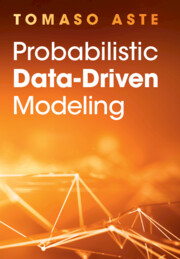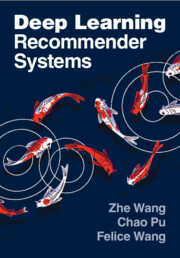Refine search
Actions for selected content:
1835 results in Knowledge Management, Databases and Data Mining
Reviews
-
- Book:
- Deep Learning Recommender Systems
- Published online:
- 08 May 2025
- Print publication:
- 22 May 2025, pp ii-ii
-
- Chapter
- Export citation
Contents
-
- Book:
- Deep Learning Recommender Systems
- Published online:
- 08 May 2025
- Print publication:
- 22 May 2025, pp v-xiv
-
- Chapter
- Export citation
Copyright page
-
- Book:
- Deep Learning Recommender Systems
- Published online:
- 08 May 2025
- Print publication:
- 22 May 2025, pp iv-iv
-
- Chapter
- Export citation
2 - Pre-Deep Learning Era
-
- Book:
- Deep Learning Recommender Systems
- Published online:
- 08 May 2025
- Print publication:
- 22 May 2025, pp 12-47
-
- Chapter
- Export citation
Foreword
-
- Book:
- Deep Learning Recommender Systems
- Published online:
- 08 May 2025
- Print publication:
- 22 May 2025, pp xv-xviii
-
- Chapter
- Export citation
5 - Recommender Systems from Multiple Perspectives
-
- Book:
- Deep Learning Recommender Systems
- Published online:
- 08 May 2025
- Print publication:
- 22 May 2025, pp 143-190
-
- Chapter
- Export citation
1 - Growth Engine of the Internet
-
- Book:
- Deep Learning Recommender Systems
- Published online:
- 08 May 2025
- Print publication:
- 22 May 2025, pp 1-11
-
- Chapter
- Export citation
Preface
-
- Book:
- Deep Learning Recommender Systems
- Published online:
- 08 May 2025
- Print publication:
- 22 May 2025, pp xix-xxii
-
- Chapter
- Export citation
6 - Engineering Implementations in Deep Learning Recommender Systems
-
- Book:
- Deep Learning Recommender Systems
- Published online:
- 08 May 2025
- Print publication:
- 22 May 2025, pp 191-224
-
- Chapter
- Export citation

Probabilistic Data-Driven Modeling
-
- Published online:
- 17 May 2025
- Print publication:
- 01 May 2025

Deep Learning Recommender Systems
-
- Published online:
- 08 May 2025
- Print publication:
- 22 May 2025
Index
-
- Book:
- Probabilistic Data-Driven Modeling
- Published online:
- 17 May 2025
- Print publication:
- 01 May 2025, pp 429-432
-
- Chapter
- Export citation
16 - Time Series and Probabilistic Modeling of Evolving Processes at Different Timescales
- from Part III - Model Construction from Data
-
- Book:
- Probabilistic Data-Driven Modeling
- Published online:
- 17 May 2025
- Print publication:
- 01 May 2025, pp 301-328
-
- Chapter
- Export citation
7 - Entropies
- from Part II - Foundations of Probabilistic Modeling
-
- Book:
- Probabilistic Data-Driven Modeling
- Published online:
- 17 May 2025
- Print publication:
- 01 May 2025, pp 99-112
-
- Chapter
- Export citation
Appendix F - Expectation Maximization
-
- Book:
- Probabilistic Data-Driven Modeling
- Published online:
- 17 May 2025
- Print publication:
- 01 May 2025, pp 410-414
-
- Chapter
- Export citation
Appendix G - Bad Modeling
-
- Book:
- Probabilistic Data-Driven Modeling
- Published online:
- 17 May 2025
- Print publication:
- 01 May 2025, pp 415-418
-
- Chapter
- Export citation
Part I - Preliminaries
-
- Book:
- Probabilistic Data-Driven Modeling
- Published online:
- 17 May 2025
- Print publication:
- 01 May 2025, pp 1-2
-
- Chapter
- Export citation
Contents
-
- Book:
- Probabilistic Data-Driven Modeling
- Published online:
- 17 May 2025
- Print publication:
- 01 May 2025, pp vii-xii
-
- Chapter
- Export citation
References
-
- Book:
- Probabilistic Data-Driven Modeling
- Published online:
- 17 May 2025
- Print publication:
- 01 May 2025, pp 419-428
-
- Chapter
- Export citation
6 - Multivariate Probabilities
- from Part II - Foundations of Probabilistic Modeling
-
- Book:
- Probabilistic Data-Driven Modeling
- Published online:
- 17 May 2025
- Print publication:
- 01 May 2025, pp 79-98
-
- Chapter
- Export citation
